World Geography And Politics Daily News | 07 Jul 2023

Views (136)
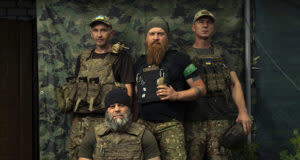
Wagner’s ‘coup’ was just the first act in its plot to destroy Putin
Yevgeny Prigozhin’s march on Moscow may have been aborted, but two weeks on the Kremlin is still reeling from his overt challenge to Vladimir Putin’s power. According to reports, the Russian Ministry of Internal Affairs (MVD) has gone so far as to run an initial inquiry into levels of public support, gauged by monitoring social media posts and internet searches by ordinary Russians.
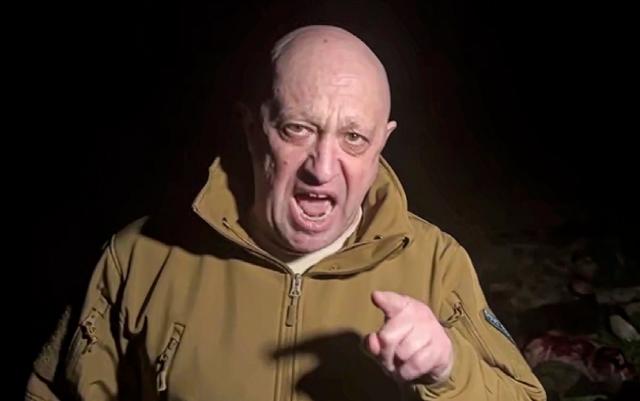
Its findings, intercepted and leaked by Ukrainian intelligence, suggests that 17 of Russia’s 46 regions sided with Prigozhin. Putin had support from just 21 regions, while the remaining eight remained split. Moscow apparently backed the Russian President, but his home city of St Petersburg was ready to throw its support behind the Wagner chief. Public support for Prigozhin in the republic of Dagestan was reportedly as high as 97 per cent.
Perhaps Putin is finally waking up, realising that the nation he thought he’d had in his palm could soon scatter. During the Covid lockdowns and in the months since the invasion, he became a near-recluse, seldom photographed outside the Kremlin. But in recent days he has been popping up across the country for meet and greets with the public. Dagestan was one of the first places he visited. And earlier this week, Putin announced that the region would be given £40 million in local infrastructure investment. If it looks like a panicked response to public unrest, then it probably is.
As for the Wagner group itself: in theory, it is being folded into the Russian army, but in practice, it’s actively recruiting from its new base in Belarus and isn’t shy about branching out once again to Russia. Telegram channels have called on subscribers to gather in St Petersburg this weekend at an event. “We will distribute t-shirts, patches, badges, stickers,” they promise. They don’t say that Prigozhin himself will show up, but he could.
The UN chief calls for a robust international police force to help combat Haiti's armed gangs
U.N. Secretary-General Antonio Guterres called Thursday for a robust international force to help combat Haiti’s armed gangs and restore security in the impoverished nation, saying that a U.N. expert’s estimate that Haiti needs up to 2,000 additional anti-gang police officers is no exaggeration. Stressing that the U.N. is not calling for a military force or a political mission, Guterres appealed to U.N. Security Council members and potential contributing countries “to act now” to deploy a multina
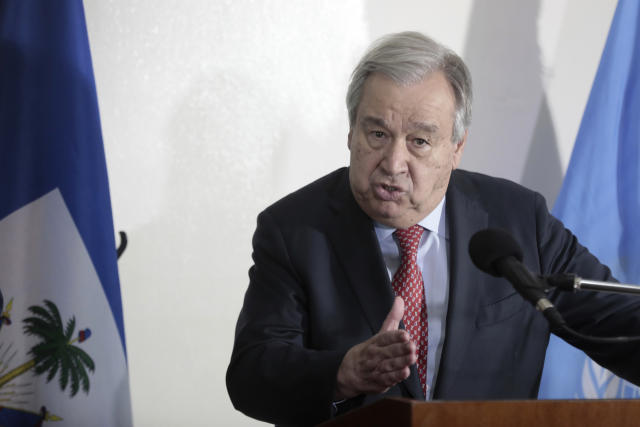
UNITED NATIONS (AP) — U.N. Secretary-General Antonio Guterres called Thursday for a robust international force to help combat Haiti’s armed gangs and restore security in the impoverished nation, saying that a U.N. expert’s estimate that Haiti needs up to 2,000 additional anti-gang police officers is no exaggeration.
Stressing that the U.N. is not calling for a military force or a political mission, Guterres appealed to U.N. Security Council members and potential contributing countries “to act now” to deploy a multinational force to help the Haitian National Police “defeat and dismantle the gangs."
The Caribbean nation has been asking for such a force since last October, and Guterres has been looking for a country to lead the deployment.
The United States and Canada, two likely candidates, have opted out. U.S. Secretary of State Antony Blinken told reporters in Georgetown, Guyana on Thursday that the United States is involved in discussions trying to find a lead nation.
The U.N. chief, who visited Haiti’s capital Port-au-Prince on Saturday, told reporters that criminal gangs have a “stranglehold” on the population. “The Haitian people are trapped in a living nightmare. Humanitarian conditions are beyond appalling,” he said.
Guterres spoke ahead of a Security Council meeting later Thursday on his report on Haiti and following Wednesday’s press conference by the U.N. independent expert for Haiti, William O’Neill, who concluded a 10-day trip to the country last week.
O'Neill estimated that Haiti needs 1,000 to 2,000 international police with expertise in organized criminal gangs and their financing, as well as in kidnappings and urban operations. He stressed that the quality of the officers is more important than the quantity.
Secretary-General Guterres, asked about O’Neill’s estimate, said the right number for an international force needs to be assessed but that it should be “a meaningful number,” and that he believes the U.N. expert’s numbers “do not reflect any exaggeration.” He added that the police also need financing, training and equipment.
At the council meeting many members supported the secretary-general's call for an international force but there were no new offers. Jamaica and The Bahamas have already signaled their willingness to contribute to a multinational force and Guyana's President Irfaan Ali said Rwanda and Kenya have also indicated a willingness.
O’Neill, an American lawyer who has been working on Haiti for over 30 years and helped establish the Haitian National Police in 1995, told reporters: “I have never seen the situation as bad as it is now.”
But he stressed that Haiti “is not without hope,” and cited efforts by prosecutors in Port-au-Prince to speed work on criminal cases and to launch corruption cases against top officials. He also singled out the customs agency’s efforts to collect taxes and duties that weren’t previously being paid.
Guterres called for simultaneous action on three fronts -- restoring security, working toward a political solution that restores democratic institutions and addressing urgent humanitarian needs. He called on donors to respond quickly to the U.N. appeal for $720 million to help more than three million people, which is only 23% funded.
The U.N. chief said these three steps are vital to break Haiti’s cycle of suffering and create a path out of the current crisis.
Since her briefing to the council in late April, she said, the dire security situation has gotten worse and the violence has moved beyond Port-au-Prince, with vigilante groups adding “another layer of complexity.” She said the U.N. political mission she heads has documented ""the killing of at least 264 alleged gang members by vigilante groups" since April.
O’Neill said he met with senior Haitian National Police leaders, including the inspector general, and they told him they are committed to seriously looking at the integrity and competence of all officers and for evidence of misconduct, abuse of power, criminal activity or collusion with the gangs.
He said the inspector general told him 80 officers have been suspended and are under investigation for misconduct or criminal activity, and that police participation in a vigilante justice movement called “bwa kale” is also being investigated.
——
Bert Wilkinson in Georgetown, Guyana contributed to this report
US 'actively' seeking leader for Haiti force, Blinken says
The United States remains active in its search for a country to head a multinational force in troubled Haiti, Secretary of State Antony Blinken said Thursday, without offering Washington's lead."We're in very active conversations with countries in the region and beyond about such a force and we're in active conversations, of course, at the United Nations about what it might do to give a force the proper imprimatur from the international community," Blinken told reporters in Guyana, his second st
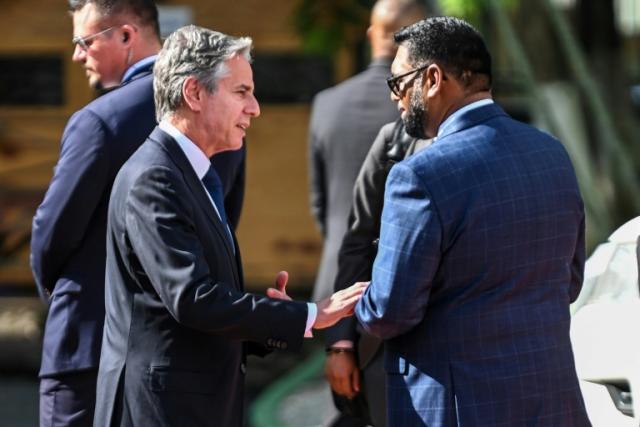
The United States remains active in its search for a country to head a multinational force in troubled Haiti, Secretary of State Antony Blinken said Thursday, without offering Washington's lead.
Blinken met Wednesday at a Caribbean summit with Haitian Prime Minister Ariel Henry and again spoke of the urgency of an international force in the Western Hemisphere's poorest nation, where gangs have taken over broad stretches of territory.
But no country has stepped forward despite nearly a year of calls for the force by Henry and UN Secretary-General Antonio Guterres.
"We're in very active conversations with countries in the region and beyond about such a force and we're in active conversations, of course, at the United Nations about what it might do to give a force the proper imprimatur from the international community," Blinken told reporters in Guyana, his second stop on a regional tour.
"Part of this involves making sure that countries step up to play important roles in such a force, particularly identifying a country that would play a leading-nation role," Blinken said.
But he declined to offer such a role for the United States, which has a long history of intervention in Haiti, and instead reiterated US support for building Haiti's fledgling national police.
US President Joe Biden -- who ended America's longest war in Afghanistan -- has made clear he has no intention of putting US troops at risk in Haiti.
Blinken met Henry at the Caribbean summit in Trinidad and Tobago, where the top US diplomat also called for renewed efforts to hold elections in Haiti.
Haitians have not voted since 2016, with the last elected president, Jovenel Moise, assassinated in July 2021. Henry has promised to step down after a new government is installed in February 2024, although election targets have repeatedly slipped in Haiti.
Speaking next to Blinken, Guyanese President Irfaan Ali said there was progress on Haiti at the Caribbean summit, with Kenya and Rwanda -- whose president, Paul Kagame, was in attendance -- offering support for the police force.
A group of former leaders, including former prime ministers Bruce Golding of Jamaica and Kenny Anthony of Saint Lucia, agreed to work with both Henry and other Haitian stakeholders on a political transition, Ali said.
"Prime Minister Henry is committed to broadening this transitional government," Ali said.
lb-sct/dw
Connecticut lawmaker attacked after Muslim service says Hartford police downplayed assault
A Connecticut lawmaker who was attacked last month while leaving a Muslim prayer service accused police in Hartford of downplaying the assault and called Thursday for a federal investigation of the department's handling of violent crimes, especially against women. Rep. Maryam Khan, the first Muslim member of the Connecticut House, wore a sling on her right arm at a news conference and was surrounded by friends, family and fellow state legislators as she gave a harrowing account of her ordeal. Khan said she was later diagnosed with a concussion and is now awaiting an MRI after losing feeling in her right arm and shoulder.
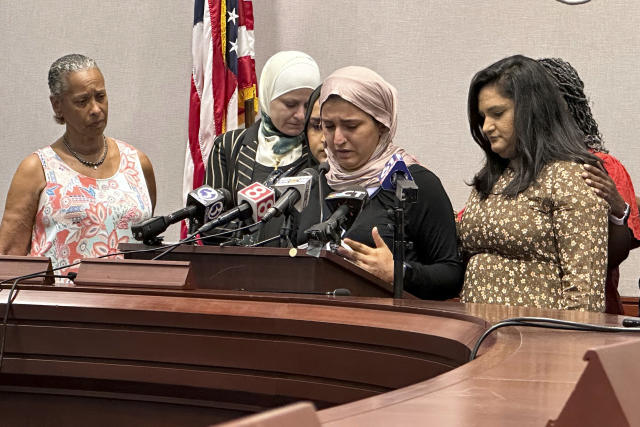
Khan said she was later diagnosed with a concussion and is now awaiting an MRI after losing feeling in her right arm and shoulder. She recalled having to convince emergency responders at the scene that she was physically injured and emotionally traumatized.
“All I keep thinking in these last few days is what happens to women in the city of Hartford that call the police when they are assaulted, when they experience what I experienced, when they experience sexual assault, when they experience physical assault,” she said in the appearance at the Legislative Office Building.
“Because if this is what’s happening to me and this is the best we can do, as a state representative who represents the city of Hartford, I cannot be OK with that. I’m not okay with that,” she said.
Khan, a Democrat, lives in the Hartford suburb of Windsor. Her legislative district includes Windsor and a part of Hartford, Connecticut's capital.
Hartford Police Chief Jason Thody expressed his sympathy for the legislator in a statement and said the department is taking the assault “very seriously,” noting both the Intelligence and Major Crimes divisions were immediately assigned the case.
“What Representative Khan experienced is awful, and I am so sorry for her and her family,” he said. The chief said his detectives have “supplemented the initial report with additional information and context" and have shared it with prosecutors. He said the department “will review every aspect of our response" to Khan's assault, noting “we always want to get better and better.”
Thody said the case remains under investigation and the department is prepared to release as much information — including video and police body camera footage — “as the law allows and Representative Khan requests.”
Khan described Thursday how she and her family were taking photos June 28 outside a Hartford arena where the prayer service was held. She said a man approached and said he “intended to have sexual relations" with one of them, including Khan's 15-year-old daughter.
He then followed them inside and Khan said he started to pursue her in particular, grabbing at her face and shirt and demanding a kiss. Khan said the man followed her back outside and tried to grab her face again but became angry when she “dodged him” and slapped her across the face. She said he later held her in a “chokehold" and held up his hand and mimicked having a gun before slamming her body into the ground.
“I knew in that moment my body went numb, and I thought I was going to die,” she said.
The Associated Press doesn’t generally identify people who report attempted sexual assaults unless they publicly identify themselves, as Khan has done.
There was no immediate response to an email seeking comment from the U.S. Department of Justice about Khan’s call for a federal probe.
The department originally said Khan suffered “minor injuries" after a man, who made lewd comments and tried to kiss her, slapped her face and let go of her neck, causing her to fall to the ground. Khan noted the police report did not mention how her children were present for the attack or that she was a Muslim marking Eid al-Adha, the end of the Hajj, the annual pilgrimage by Muslims to Mecca.
She said her family regularly attends the annual prayer service at the XL Center, an arena in downtown Hartford, which drew roughly 4,000 people to the June 28 gathering. Information provided by Mayor Luke Bronin's office said the XL Center hired one sergeant and two officers to work at the prayer service, which has been held there for many years without incidents.
“Without a legitimate reason, a larger police detail can drive up the expense for events and can make attendees uncomfortable and feel overpoliced,” the mayor's office said.
Emails were sent Wednesday and Thursday seeking comment from Desmond’s public defender, but there was no immediate response.
Opinion: U.S. B-52 bombers join South Korean drills while tensions escalate with North Korea
The ongoing confrontation between North Korea and South Korea continues to build as the U.S. and South Korea strengthen defenses. Learn more here.
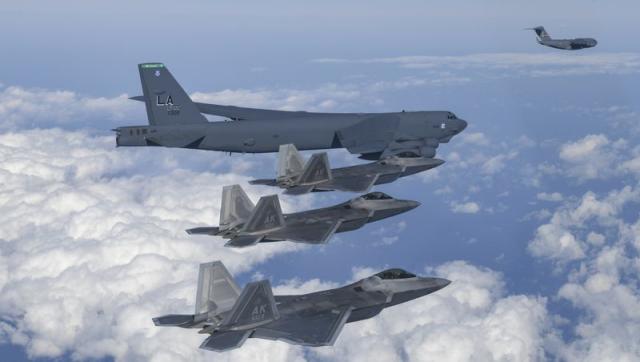
“The training offered the alliance an opportunity to further strengthen its interoperability by demonstrating a combined defense capability, rapid deployment, and extended deterrence in the defense of the Korean Peninsula.”
This U.S. Air Force press release, issued June 30, describes drills in South Korea involving intercontinental B-52 bombers along with tactical fighter aircraft. The media message describes significant escalation in the ongoing confrontation between North Korea and South Korea.
The B-52 Stratofortresses that traveled from the United States date from the 1950s and the height of the Cold War. They have undergone retrofitting over the years but remain essentially as designed and constructed more than a half century ago.
The B-52 is not only an example of the exceptional military design and development capabilities of this country, but also a symbolic reminder of the continuity of some conflicts in the world as well as the horrific possibility of nuclear war.
This bomber has proven to be flexible as well as durable, in ways unforeseen during the original creation. The construction in the 1950s was a function primarily of the need to deter the Soviet Union by the potential delivery of nuclear weapons on targets there and elsewhere. By the following decade, B-52s were actually delivering conventional bombs on targets in both North and South Vietnam during our long war there.
The B-52s in the current exercise flew from Barksdale Air Force Base in Louisiana. They are separate from others, deployed to South Korea since mid-June, that are from Minot Air Force Base in North Dakota.
Additionally, the Biden administration plans to send the largest nuclear-armed U.S. submarine to South Korea for the first time in four decades. The powerful Ohio-class submarine is capable of staying submerged indefinitely and remain on patrol for months.
Remarkable long-range capabilities represent starkly the capacities of technology to bridge and minimize the challenges of geography, including the exceptional distances across the Pacific Ocean.
Related
South Korea has also been recently visited by the USS Michigan, a submarine armed with cruise missiles, capable of great flexibility and deception in flight. This ship is actively involved in combined South Korea-U.S. special operations training.
Military partnership between our two nations is exceptionally close, dating from the devastating Korean War of 1950 to 1953. During our long Vietnam War, the Republic of Korea maintained approximately 50,000 troops in South Vietnam.
In contrast to U.S. military force profiles, almost all these soldiers and marines were combat troops. Their approach to combat sparked some controversies, but there was no doubt that they were extremely effective. North Vietnam Army and Viet Cong revolutionary forces actively tried to avoid contact with the Koreans.
North Korea is engaged in ominous long-range missile tests, with evidence of steady improvement in launch and delivery capabilities. U.S. efforts to restrict this dangerous behavior by working through the United Nations have been consistently stymied by China and Russia.
Expanding cooperation between Seoul and Washington builds directly on South Korea President Yoon Suk-yeol’s successful six-day visit to Washington, D.C., in April, marking the 70th anniversary of the vital alliance between our two nations.
As emphasized in an earlier column, Yoon has opportunities to develop a starring global leadership role, with noisy North Korea shunted off to stage left.
At a White House state dinner, he sang Don McLean’s 1971 song “American Pie.”
Why no one can end the Ukraine war
Even Putin can't end the conflict
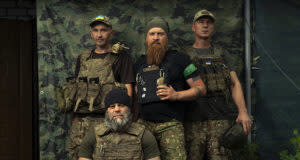
Not the stuff of headlines, but a rather sobering admission that, as the war approaches its 500th day tomorrow, there is no end in sight. Not this year, or next year or the year after. That should be deeply concerning, especially because, contrary to received wisdom, all those who really matter — the Ukrainians, Russians and the Americans — are actually trying very hard to end it.
For it is not true, contra widely held opinion, that Zelenskyy wants the world to support him forever as he completes a full Reconquista — including Crimea. His current offensive — the push towards the Black Sea to cut off Russian forces further west – is a clear demonstration of this. It was deliberately calculated to push Moscow to the negotiating table or risk losing tens of thousands of soldiers to captivity or death.
But Zelenskyy has consistently refused to spell out the fact that he has a “limited aim” of reaching a negotiated peace without Crimea. And he has done so for both military and personal reasons.
The military reason is straightforward and common to every war: to advance at all, Ukrainians on the front line cannot fight in a “limited” way. They must believe that their absolute commitment and self-sacrifice can end the war in victory.
The personal reason is that Zelenskyy is a Jew, as is his defence minister, Oleksii Resnikov. And like the countless Jews who fought for their countries up and down Europe in the last century, the pair remain suspect in the eyes of the Ukrainian ultra-nationalists who are commonly antisemitic.
It is, for them, no small irony that Ukraine should be led in its struggle for existence by two Jews since its founding hero, Bohdan Khmelnytsky, was Hitler’s only predecessor as a genocidally-antisemitic national leader; but instead of opprobrium, he has a city, a region, countless streets and Zelenskyy’s own Presidential Guard brigade named after him. Given the nationalists’ bigoted mistrust of the president, in spite of his stellar leadership since the first night of war, he cannot be seen to be a compromiser.
Yes, it is perfectly true Putin started the war determined to conquer Ukraine in less than a week, armed with the marvellously advanced “post-kinetic” war plan — all the rage in the US too —devised by his military chief, Valery Gerasimov. But from the bitter February morning when Putin discovered that Gerasimov and his FSB internal-intelligence chief — along with US, French and German intelligence — were utterly wrong, Putin has refused both of the alternatives available to him. The first was what to do what many believe he did last year: decide to fight in earnest. For that he would have had to declare war, and mobilise his two million reservists to invade with overwhelming military force, as opposed to Gerasimov’s for-show-only advance of 150,000 (including field dentists).
But Putin did fear something just as powerful. Every Russian army unit, except for the fully professional airborne forces, includes 18- and 19-year-old conscripts, whose mothers would swiftly take to the streets across Russia and flood Red Square to vehemently protest if there were any more than a handful of casualties. Modern Russia is just as “post-Heroic” as any other low-fertility country where there are no spare male children to sacrifice for the nation’s glory (China has fewer than most). And Putin was not about to declare war and have his police battle Russia’s mothers. He not only refused to mobilise the Russian armed forces, he even banned the word “war” (война, or voyna) from all official communications.
He also has roubles — which he is wielding. Right now, joining the Russian army earns one a ₽600,000 sign-up bonus, ₽204,000 a month ($2,296 today), and stellar death benefits: ₽5,000,000 from the President himself an additional 2-3 million from the regional government and a monthly widow’s pension of ₽25,000 a month. Enough have joined to provide the forces that dug and fortified the long trench lines now holding up Ukraine’s offensive, along with almost 200,000 of the recalled reservists, who get the same pay and benefits.
And there are still more newly enrolled Russian troops in the east, and in the formerly independent state of Belarus (the country that, in all but name, Putin did conquer last year). But while Putin could keep up a war of low-level attrition for a while, it cannot lead to victory. And now he has Elvira Nabiullina to contend with.
Nabiullina is the formidable head of Russia’s Central Bank. Already very highly respected before the war, she is now the hero of Russian public finance for having successfully controlled inflation — better, in fact, than the Bank of England or the US Federal Reserve. The word is that she is tapering the printing of roubles, not for fear of a greater national debt (Russia’s is much lower than that of the US or UK) but of inflation. For Putin, too, that is a greater threat than anything his troops can encounter on the battlefield. Inflation will quickly drown Russia’s poor, many of whom are scattered across the endless steppe of Russia with very few opportunities to earn their way around rising prices.
So here’s our paradox. Even though all three key parties want to end the war, the fighting still continues. Why? Because of a virtue that is also a sin. The Ukraine war is not an all-out war like the First or Second World Wars. It is a “limited war”, with US and Russian embassies still functioning in Moscow and Washington, US and Russian astronauts sharing space capsules, concerned phone calls by the CIA director when Moscow is briefly in turmoil. It is bound by reciprocal restraint. The Russians do not attack US aircraft and vessels bringing weapons to their enemy, the Americans do not supply weapons to Ukraine that can attack Russian cities. Putin himself has silenced threats of nuclear attacks by Russian hotheads, declaring that he would only use nuclear weapons if Russia were faced with imminent destruction — that is, inevitably, nuclear destruction.
In other words, the good news is that the Ukraine war is, a polite, “limited war”, just like those of the 18th century that were later envied in the terrible 20th century of all-out, unlimited wars. But the bad news is that as long as only the Ukrainians are under fire, none of the other protagonists has an impellent reason to end the fighting. So like the 18th-century Seven Years’ War, it risks dragging on for at least another 500 days.
0 Likes
